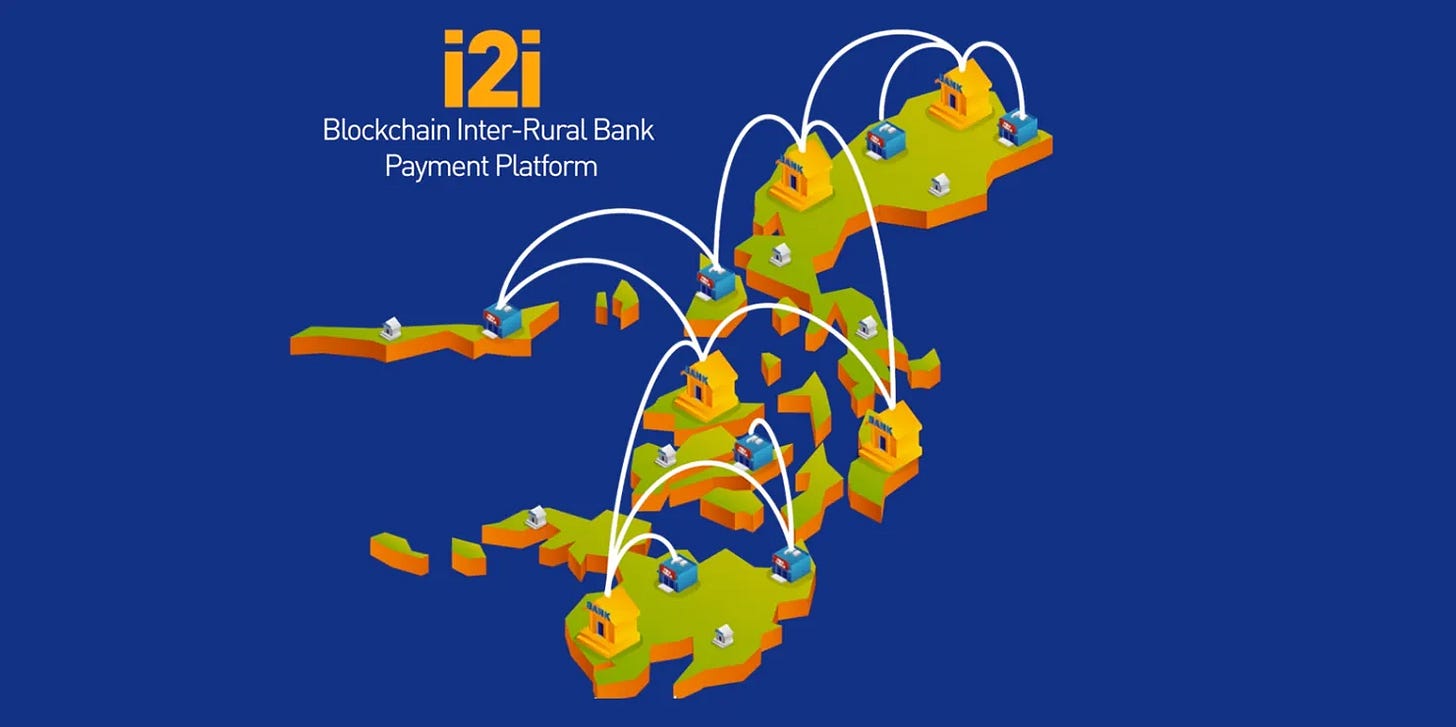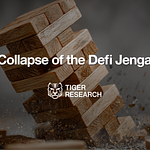This report was written by Tiger Research, analyzing how Southeast Asian countries are developing localized blockchain solutions tailored to their regulatory and economic environments.
TL;DR
Southeast Asia actively develops local chains. These chains reflect each country's regulations, languages, and cultural traits. Unlike global Layer 1 chains like Ethereum and Solana, local chains design for specific needs. They prioritize compatibility with policy goals. They work with local financial infrastructure. They meet regulatory requirements.
Local chains fall into three types. Government-backed chains develop through national policy connections. Corporate-led chains meet market demands through business development. Dependent chains use global chains without building infrastructure. Each type differs in development leadership. Strategic directions vary. Institutional connections work differently.
Chains that fit local conditions gain competitive advantages. They match institutional environments better than technically superior chains. They meet real-world usage needs. This pattern will likely strengthen going forward.
1. Introduction
Southeast Asia hosts one of the world's densest Web3 user populations. Vietnam, Thailand, and the Philippines consistently rank high on global crypto adoption indices. These countries now nurture unique local blockchain projects that thrive on their active user communities.
These projects reflect local regulations, languages, and cultural nuances. They deliver tailored experiences that global mainnets miss. Local teams build solutions to boost Web3 accessibility and adoption for their markets.
This report examines these emerging local blockchains. We analyze how they carve out niches and compete in the cutthroat global Web3 space.
2. Southeast Asia's Infrastructure Environment Develops in Distinct Ways
Many view Southeast Asia as one regional market. But blockchain infrastructure development shows clear differences across countries. Governments, financial institutions, and startups all build Layer 1 blockchains. Each country takes different paths based on their institutional challenges and policy priorities.
'Local chains' that emerge differ fundamentally from global chains like Ethereum or Solana. Global chains prioritize versatility and scalability. They build public infrastructure that works anywhere. Local chains target specific countries. They design for local legal systems, financial frameworks, and tech environments. Their governance aligns with local regulations and policy goals.
Think of cloud computing as an analogy. Ethereum and Solana work like AWS - universal cloud infrastructure. Local chains work like Korea's Naver Cloud or Vietnam's VNG Cloud. They customize infrastructure for each country's regulations and industry needs.
Local chains typically share these traits:
Local-first strategy: The chain centers on national policy goals.
Local compliance: It builds in local regulations like KYC, AML, and data localization.
Local infrastructure ties: It connects with local banks, identity systems, and payment networks.
Local setup and operations: Local teams founded and run the chain.
Not every chain hits all four marks. But we classify chains as "local" based on how well they match these standards. Global projects that just market to specific countries don't count.
2.1. Vietnam: Where Private Innovation Meets National Strategy
Vietnam shows how corporate-led tech development and government policy work together. Regulations are still taking shape. But growing discussions create space for corporate and public sectors to develop side by side.
Early players like Viction and KardiaChain built Vietnam's Layer 1 ecosystem. They focused on retail-centered use cases. They created developer-friendly environments. These chains expanded without government support. They worked to secure market foundations independently.
1Matrix’s launch in May 2025 created a new turning point. One Mount Group developed this Layer 1 blockchain. This major Vietnamese conglomerate set specific targets. The chain aims for national digital transformation. It pursues data sovereignty. It seeks cross-industry system integration as core goals.
Existing chains took different approaches. They emphasized agility and community focus. 1Matrix differs significantly. It emphasizes direct connections with administrative services. It connects with public services too. This creates a policy-aligned model.
This aligns with Prime Minister Decision No. 1236's policy direction. The decision encourages developing domestic platforms. It supports "Make in Vietnam" blockchain networks. It includes policy support for corporate-led infrastructure development.
1Matrix represents a key example. It developed under this policy framework. It shows how corporate technical capabilities combine with national digital strategy.
2.2. Indonesia: Startup-Led Experimental Local Chain Development
Indonesia's local chains show how chains can develop through startup-led experiments and real demand without state support.
Vexanium stands out as a startup-driven Layer 1 chain. It provides infrastructure optimized for various use cases within Indonesia's economic ecosystem. The chain focuses on digital payments and loyalty programs for small businesses. It offers high cost efficiency and flexible deployment structures. Vexanium aims to use blockchain technology to address financial access gaps that traditional systems miss for small businesses.
Mandala Chain operates as a Polkadot-based hybrid Layer 1 chain. It supports both public and private blockchains. The chain targets both companies and public institutions. It applies to various industries including digital identity verification, supply chain management, and medical data processing.
These cases demonstrate something important. Layer 1 ecosystems can expand based on real problem-solving and local development capabilities. They don't need direct government support to scale according to demand.
2.3. Philippines: High Web3 Usage, but No Local Chains
The Philippines embraced blockchain technology early in Web3 gaming and DeFi. Platforms like YGG (Yield Guild Games) expanded rapidly. They built communities of over one million users. YGG drove the play-to-earn market spread.
The country built a strong user base. But it relies entirely on global public chains for tech infrastructure. Projects use Ethereum, Ronin, and Binance Smart Chain. No domestic teams develop independent Layer 1 chains.
Blockchain use cases in the Philippines stay limited. UnionBank leads Project i2i. This connects rural banks through a permissioned Ethereum network. PHPX operates as a multi-bank stablecoin on Hedera. The central bank runs CBDC pilot project Agila on a closed infrastructure. These cases all use external technology for specific purposes.
The Philippines' blockchain ecosystem grew naturally. It centers on digitally-savvy users and public demand. But the country lacks national tech strategy. It has no local infrastructure development.
External players control infrastructure. This could create long-term constraints. These might hurt regulatory enforcement, data localization, and public sector ties. The structure may limit medium-term policy alignment and technology development.
2.4. Thailand: Exchange-Led Local Chains
Thailand shows how exchanges directly develop Layer 1 chains. They grow them rapidly within institutional frameworks. Bitkub leads this effort. Thailand's largest digital asset exchange drives Bitkub Chain development.
The chain serves diverse areas. It handles NFTs and loyalty programs. It connects with fintech services. It runs pilot projects for government agencies. It covers healthcare too. By 2024, cumulative transactions exceeded 5 billion. Active wallets surpassed 2 million.
Bitkub Chain operates BTB (Bitkub Thai Baht). This stablecoin pegs 1:1 to the Thai Baht. The platform conducts on-chain payment experiments. It runs financial service trials too.
Thailand's government takes a different approach. It doesn't develop a separate state-led chain. Instead, it supports corporate-led infrastructure development. Exchange licenses enable this growth. Sandbox systems provide support.
This creates a balanced approach. Corporate technical capabilities combine with government institutional backing.
2.5. Cambodia: Central Bank-Led Digital Payment Infrastructure
Cambodia builds its digital payment system through a central bank-operated Layer 1 blockchain. Bakong is a permissioned chain. Cambodia's National Bank designed it using Hyperledger Iroha. The chain provides multiple functions. It handles inter-bank settlements. It processes retail payments. It connects QR-based wallets too. The network operates centrally. Only licensed financial institutions can participate as nodes.
By early 2025, Bakong registered over 30 million accounts. Cumulative transaction volume reached approximately $105 billion. This far exceeds Cambodia's GDP. The platform supports both Cambodian Riel (KHR) and US Dollar (USD). Over 20 financial institutions currently participate.
The system targets specific goals. It expands financial access. It reduces cash and foreign currency dependence. It strengthens currency flow management. The system builds in KYC and anti-money laundering (AML) requirements. It includes cross-border payment functions too. Bakong currently operates as a CBDC pilot model. It serves as digital payment infrastructure designed for policy purposes.
3. Local Chain Development Patterns in Southeast Asian Markets
Southeast Asian countries develop local blockchains differently. Each country follows its institutional environment and economic context. Governments view blockchain technology differently. They have different usage purposes. This creates distinct differences in chain structures and operations.
These development patterns split into three models.
The first is government-backed. Cambodia's Bakong and Vietnam's 1Matrix show key examples. They design closely with national policy goals. Bakong operates directly under the central bank. 1Matrix develops through corporate efforts. But it aligns with national digital strategy. These chains adopt permissioned network structures. They integrate tightly with legal currency systems. They implement KYC and AML requirements at infrastructure levels. Core goals include reducing foreign currency dependence. They also secure data sovereignty.
The second is corporate-led. Thailand's Bitkub Chain shows this model. Vietnam's early chains like Viction and KardiaChain do too. Corporate players capture market opportunities. They develop chains for commercial applications. They focus on loyalty programs and fintech services. They secure legal operating foundations through regulatory cooperation. They excel at agile experimentation. They offer flexible scalability.
The third depends on global infrastructure. Countries like the Philippines skip building Layer 1 infrastructure. They develop applications on existing public chains instead. They use Ethereum, BNB Chain, and Solana. This approach enables fast development and deployment. But it limits control over regulatory response. Data sovereignty becomes harder to manage.
Southeast Asian local chain strategies don't converge. They develop in different forms based on each country's unique conditions. Development leadership determines outcomes. Core functions matter. How chains relate to existing institutions shapes their structure and development direction.
4. Closing Thoughts
Southeast Asian local chains evolve beyond being blockchains developed in specific countries. They become practical infrastructure. Each nation tailors them to institutional, technological, and economic conditions. Cases from Vietnam, Indonesia, the Philippines, Thailand, and Cambodia show key patterns. Various actors develop local chains differently. Governments take one approach. Corporations take another. Startups choose different paths. Usage goals connect closely with regional contexts.
This trend extends beyond blockchain. Google dominates global search markets. Yet Korea's Naver secured its market through specialization. China's Baidu did the same. They focused on local languages and content. They handled policy responses better. Global chains expand rapidly. They use versatility and liquidity. But they struggle to connect with each country's institutions. Public service systems pose challenges too.
Local chains take a different approach. They design for specific policy goals. They match financial infrastructure needs. They fit user characteristics. They achieve compatibility with institutional frameworks. They create real value.
The core question changes. Don't ask "which protocol dominates global markets?" Ask this instead: "which infrastructure actually works within each country's unique conditions? Which creates real value?"
Sustainable chains in emerging markets won't just excel technically. They'll prove viability and sustainability. Local contexts matter. Institutional environments matter too. The future of local chains doesn't depend on technical superiority. It depends on problem-solving ability. Can they solve real problems? Can they work with institutions? These factors determine success.
🐯 More from Tiger Research
Read more reports related to this research.Disclaimer
This report has been prepared based on materials believed to be reliable. However, we do not expressly or impliedly warrant the accuracy, completeness, and suitability of the information. We disclaim any liability for any losses arising from the use of this report or its contents. The conclusions and recommendations in this report are based on information available at the time of preparation and are subject to change without notice. All projects, estimates, forecasts, objectives, opinions, and views expressed in this report are subject to change without notice and may differ from or be contrary to the opinions of others or other organizations.
This document is for informational purposes only and should not be considered legal, business, investment, or tax advice. Any references to securities or digital assets are for illustrative purposes only and do not constitute an investment recommendation or an offer to provide investment advisory services. This material is not directed at investors or potential investors.
Terms of Usage
Tiger Research allows the fair use of its reports. ‘Fair use’ is a principle that broadly permits the use of specific content for public interest purposes, as long as it doesn't harm the commercial value of the material. If the use aligns with the purpose of fair use, the reports can be utilized without prior permission. However, when citing Tiger Research's reports, it is mandatory to 1) clearly state 'Tiger Research' as the source, 2) include the Tiger Research logo. If the material is to be restructured and published, separate negotiations are required. Unauthorized use of the reports may result in legal action.

















